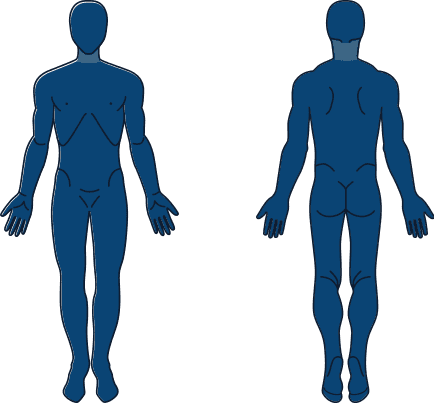- Bicycling is one of the best ways to exercise, enjoy the outdoors, participate in recreation, or to get around town.
- Participation in bicycling continues to grow each year.
- This increase has led to an increase in both acute/traumatic and overuse injuries.
- The most common overuse injuries involve the knees, neck, and back.
- The most common cause of these injuries are bike fit and improper training
- Important bike fit parameters include frame size, top tube length, seat height, saddle position, handlebar position, and crank-arm length.
- It is recommended to have your bike fitted by a local bike shop or experienced rider.
- Overuse Injuries
- Knee
- Anterior – Patellofemoral syndrome, patellar tendinopathy, quadriceps tendinopathy
- Common causes include training errors, high gearing, hill riding, seat too low or too far forward, crank arm too long
- Medial – Medial patellofemoral complex irritation, bursitis (pes anserine)
- Common causes include training errors, cleats with toes pointing out, feet to far apart
- Lateral – Iliotibial band (ITB) syndrome
- Common causes include poor cleat placement, seat height/location problems
- Posterior – Hamstring tendinopathy
- Overtraining, improper seat and or cleat positioning
- Neck
- Trigger points in neck muscles
- Common causes include repeated hyperextension of neck while riding, sadle and handlebar positioning
- Back
- Low back pain may be secondary to fatigue from prolonged positioning on the bike as well as degenerative disease in older riders
- Other body parts that may suffer overuse injuries include the hands (neuropathy, carpal tunnel, tendon issues in the wrist), the foot and ankle (numbness/tingling, toe pain), the hips (bursitis, tendinopathy), and perineum (saddle sores, tinea cruris, ischial tuberosity pain, pudendal neuropathy)
- Traumatic Injuries
- Arms
- Falls can result in wrist/hand fractures, elbow injuries, shoulder separations, clavicle fractures
- Head
- Most bicycle related deaths are the result of head injuries
- Helmets eliminate the severity of head injuries by 85-90%
- Skin
- Abrasions and puncture wounds
